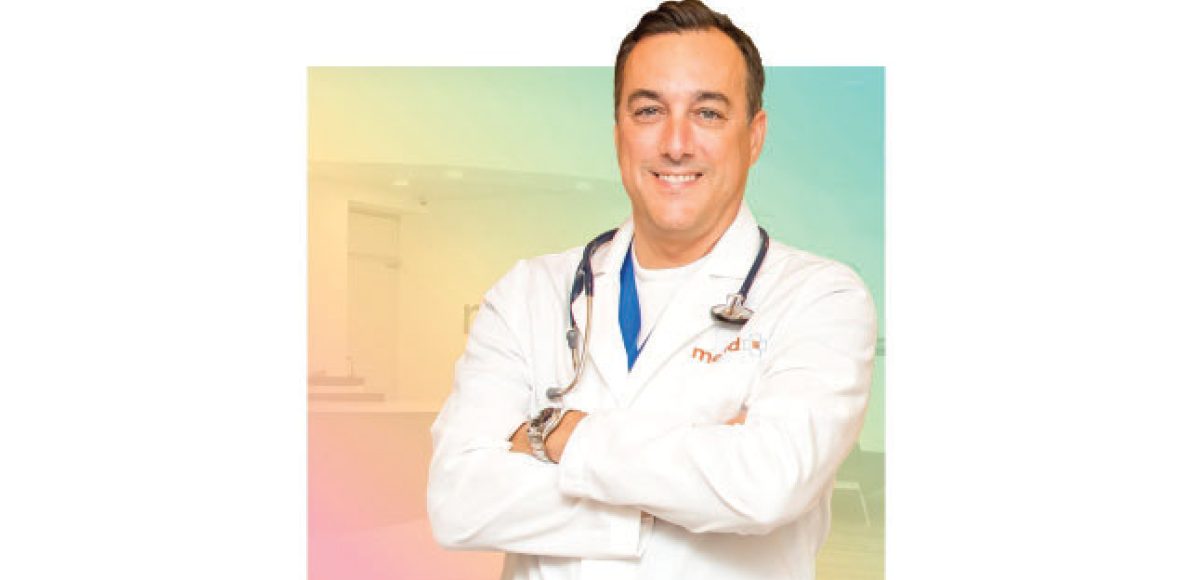In this multi-part series, “COVID-19 and Our Community,” the Courier is profiling healthcare professionals at the frontlines of the current crisis. Once again this week we feature Anthony Cardillo, M.D., CEO and
Medical Director of MEND Health, Inc., the company that operates MEND Urgent Care Facilities throughout Southern California. A Board-Certified Emergency Room Physician, Dr. Cardillo is also a regular contributor on ABC7 Los Angeles.
BH Courier: We’re hearing that the number of non-COVID-19 patients showing up at emergency rooms and urgent cares is down. Is that what you’re seeing?
Anthony Cardillo, M.D.: There’s been a dramatic decline across the board in all medical establishments. Lots of doctor’s offices are closed, which leaves emergency rooms and urgent cares at the frontlines. But, we’ve still seen a decline of upwards of 75 percent of patient volume.
What does this mean that fewer patients are showing up?
It is scary. It means a lot of illnesses are going untreated because people are afraid to access medical care. But those medical problems haven’t gone away. People could be having mini strokes, TIAs, chest pain. Things that are early markers that we need to catch early and do workups early before they brew into much bigger problems. We know that a lot of people sitting at home are ticking time bombs.
Can you give an example of the larger problems that can arise if people wait longer than they should.
People are presenting to urgent care or the ER at a later stage of the disease. They’re coming in for medical care with appendicitis that may have been caught early. Intraabdominal problems, gall bladder problems, appendicitis, these are things that can be brewing for a while.
How does the public balance the risk of being exposed to the virus with the risk of a worsening medical condition?
Right now people are afraid to come in because they’re afraid they will get sick. I will tell you that every emergency department and urgent care in L.A. that is reputable has done a fantastic job of separating COVID-19 and non-COVID patients. We have very strict protocols for screening every single patient that walks in, so that we can sequester those that need to be separated. You are more likely to get the virus by going to the supermarket than in an ER or urgent care right now.
What advice can you give about symptoms to be concerned about at home?
Everyone should be mindful about chest pain. Any kind of discomfort or pressure in the chest. If you experience it when exerting yourself, such as when climbing a flight of stairs or during home exercise, definitely seek care in a hospital ER. If you have any symptoms of a small mini stroke, such as slurred speech, weakness or one side of the face or facial droop, it could be a silent marker of an evolving stroke. Abdominal pain in the upper right quadrant could be a gall bladder issue. The lower right quadrant could be the appendix. You want these evaluated earlier in the disease process rather than later, before it advances. Of course, if you have COVID-19 symptoms of fever, body aches, cough, shortness of breath, nausea, vomiting, headache, loss of taste and smell, sore throat, you should go to urgent care to be triaged.
The list of virus symptoms is getting longer it seems.
We’re finding a lot of patients coming in with GI symptoms, such as nausea and vomiting. We see this with the flu every year. But, with the flu we have Influenza A and Influenza B. One is respiratory, the other is GI-related. COVID-19 evolves in the same way. A big study is being done looking at lots of people coming into the hospital. We now know that so many symptoms could all be COVID.
There are news reports about COVID-19 possibly causing strokes. What can you tell us?
People come in with the virus and many of them just plummet. They go off the edge real fast. We realize more and more it’s not just the lung and pulmonary issues. going on. It is something else. It can also affect the hemoglobin molecule in the blood. The blood isn’t able to carry oxygen, like what you see with high altitude sickness. We’re seeing blood clots that could cause strokes. They may be related to COVID-19 infection. It appears that COVID-19 is infecting multiple areas of the body.







